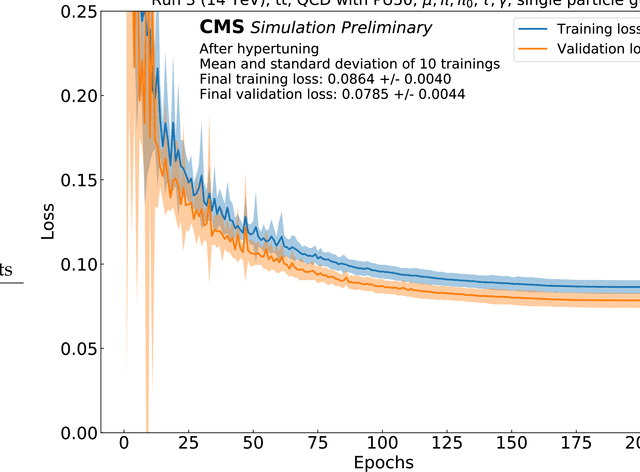Jieun Yoo
On-Sensor Data Filtering using Neuromorphic Computing for High Energy Physics Experiments
Jul 20, 2023



Abstract:This work describes the investigation of neuromorphic computing-based spiking neural network (SNN) models used to filter data from sensor electronics in high energy physics experiments conducted at the High Luminosity Large Hadron Collider. We present our approach for developing a compact neuromorphic model that filters out the sensor data based on the particle's transverse momentum with the goal of reducing the amount of data being sent to the downstream electronics. The incoming charge waveforms are converted to streams of binary-valued events, which are then processed by the SNN. We present our insights on the various system design choices - from data encoding to optimal hyperparameters of the training algorithm - for an accurate and compact SNN optimized for hardware deployment. Our results show that an SNN trained with an evolutionary algorithm and an optimized set of hyperparameters obtains a signal efficiency of about 91% with nearly half as many parameters as a deep neural network.
Machine Learning for Particle Flow Reconstruction at CMS
Mar 01, 2022
Abstract:We provide details on the implementation of a machine-learning based particle flow algorithm for CMS. The standard particle flow algorithm reconstructs stable particles based on calorimeter clusters and tracks to provide a global event reconstruction that exploits the combined information of multiple detector subsystems, leading to strong improvements for quantities such as jets and missing transverse energy. We have studied a possible evolution of particle flow towards heterogeneous computing platforms such as GPUs using a graph neural network. The machine-learned PF model reconstructs particle candidates based on the full list of tracks and calorimeter clusters in the event. For validation, we determine the physics performance directly in the CMS software framework when the proposed algorithm is interfaced with the offline reconstruction of jets and missing transverse energy. We also report the computational performance of the algorithm, which scales approximately linearly in runtime and memory usage with the input size.
 Add to Chrome
Add to Chrome Add to Firefox
Add to Firefox Add to Edge
Add to Edge